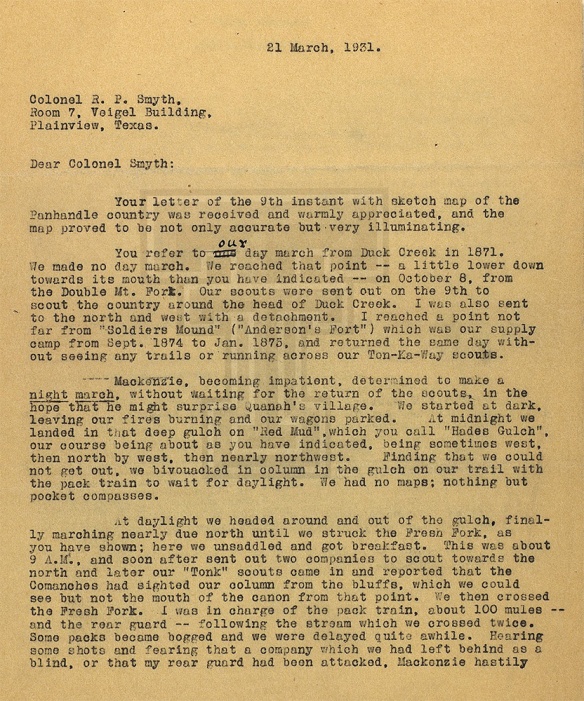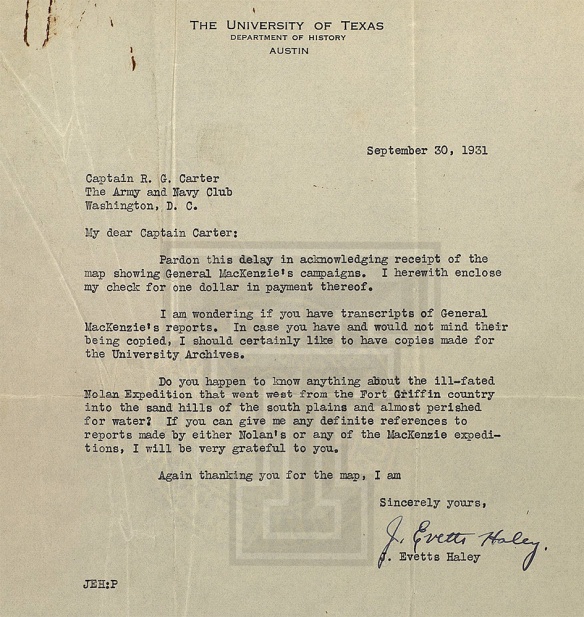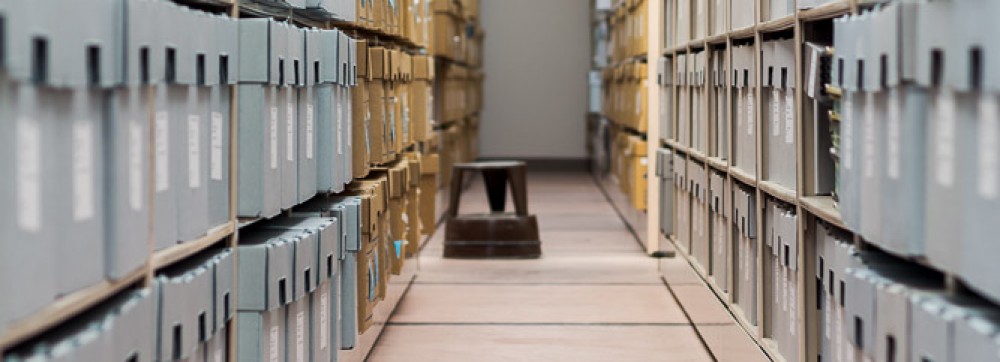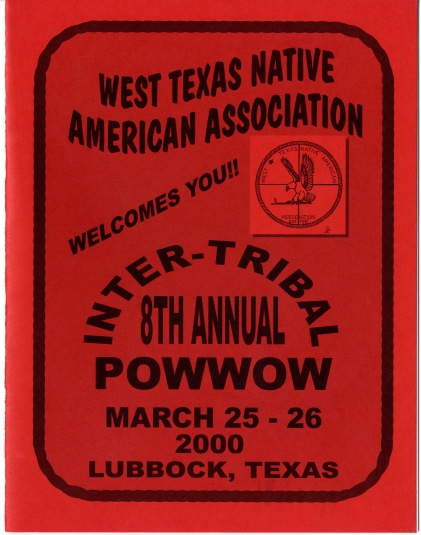
The Southwest Collection is located on the Llano Estacado, also known as the South Plains. Folks have been visiting the region for more than a century in a half, which in those early years resulted in no small amount of conflict. One, the Battle of Blanco Canyon near the Brazos River in 1871, occurred between U.S. Soldiers and a Comanche raiding party. A survivor of that conflict, Captain Robert G. Carter, was awarded a Medal of Honor for his conduct in the fight. The Southwest Collection is fortunate to have his correspondence and related materials dating from the years after the fight, and we’re going to share some of it with you in this very blog!
The image at the top of this post is of a letter from Carter’s extensive correspondence with fellow veterans of the “Indian Wars.” Carter had served under Ranald Mackenzie both in that conflict and later along the Mexican border at the end of the 19th century. So, too, did this letter’s recipient, Col. R. P. Smyth. In this letter, Carter regales Smyth with some of the facts. Sadly, we do not have Smyth’s original or subsequent letters.

Carter became well-known through his published memoirs, such as On the Border with Mackenzie (1935). He also sold maps of the conflict, such as the one referenced by renowned Texas historian J. Evetts Haley in the letter above. In another collection, we even have a copy of the map, which you can see below.


History was Carter’s passion, and he promoted it not only through his publications, but also through participation in various organizations dedicated to preserving it. The 1932 newspaper clipping above (culled from a newspaper we unfortunately haven’t been able to identify) celebrating his elevation to commander of the Order of Indian Wars, an organization serving veterans of that conflict.

And yet some of his papers are banal. Here we have a dispute with a bank over miscalculated interest. It rings as true then as it does for some of us today. In fact, Carter’s papers contain at least 14 pages of his back and forth with the Union Trust Company, full of pithy responses to their incorrect claims: “According to the mathematics taught me, two items of the same amount, one subtracted from the other, leaves 0.” Carter, telling it like it is!
The Robert G. Carter Papers comprise only a single archival box, but are packed with unique material like this, documenting Carter’s recollections of service, as well as his day-to-day life in the years following. They’re available in their entirety among our digital collections, and we’d love for any interested researchers (or the generally curious) to take a look through them.




